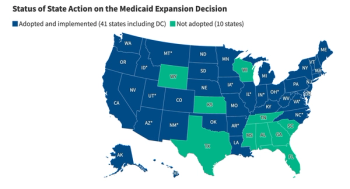
- MHE January 2023
- Volume 33
- Issue 1
Managed Healthcare Executive® State of the Industry Survey Results, Part 1
Respondents ranked labor shortages and closing healthcare disparities the highest when asked what about most important issues facing U.S. healthcare in 2023.
What issues and challenges in healthcare will loom the largest this year?
That was question we asked in our annual State of the Industry this year. Respondents rated issues on a scale of 1-10 with 10 being the most important. We then weighted the answers with 10 having a value of 10, 9 having a value of 9, and so on.
The results were close but labor shortages ranked the highest in importance (weighted score of 6.73), followed by closing healthcare disparities (6.69) and long covid (6.63).
Adoption of the biosimilars (6.37) and interoperability (6.27) came out at the bottom of the importance ranking.
It is not surprising that labor shortages topped the list. The news has been full of stories about staffing shortages and related labor unrest. The U.S. Bureau of Labor Statistics has projected that there will be 200,000 openings for registered nurses each year over the next eight years. The bureau says employment of nurses is expected to grow by 6% in the 2020s, but that is about the same rate of growth as other occupations. The openings are the result of retirements and people leaving nursing for other professions.
The MHE State of the Survey was conducted in late November and early December 2022. Our colleagues at Medical Economics® helped disseminate the survey. The survey had just over 450 respondents.
Articles in this issue
almost 3 years ago
Insurtechs Are Pulling Backalmost 3 years ago
CMS Grades 21 Payment Modelsalmost 3 years ago
Connecticut Bucks the Medicaid Managed Care TrendNewsletter
Get the latest industry news, event updates, and more from Managed healthcare Executive.





















































